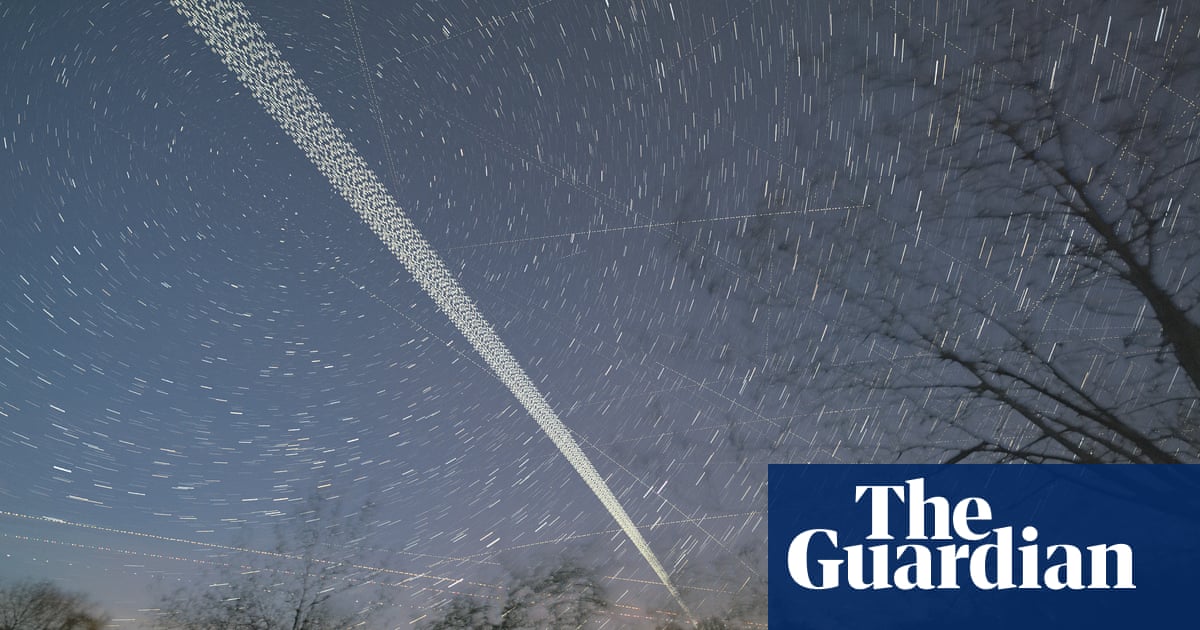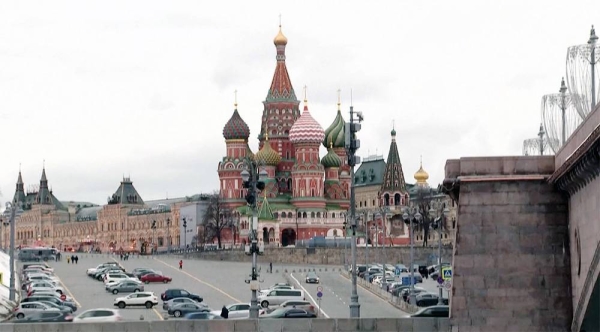
There’s a point at which light pollution starts to make astronomical observations impossible – a point we are fast approaching, thanks in part to Elon Musk.
More than 3,000 of the 5,000 active satellites orbiting Earth belong to Musk’s SpaceX, including its Starlink fleet. Another 12,000 Starlink launches have been approved, and SpaceX wants a further 30,000 second-generation satellites on top of that, covering the entire globe.
China and Russia also have aspirations for world satellite dominance, and accusations have flown about which countries, or companies, may or may not be breaking the space rules.
These mega-constellations of satellites are increasingly photo bombing astronomers’ pictures of the night sky, ruining images and threatening their ability to make new discoveries.
Satellites in low Earth orbit, including Starlink, also cause radio interference with sensitive astronomical instruments.
But it is their contribution to the artificial brightness of the night sky (“skyglow”) – adding to light pollution from the illumination of the world’s cities – that has astronomers most worried.
When SpaceX launched the first 60 Starlink satellites in 2019, astronomers were surprised at how bright they were, and warned they would start to affect astronomy “even in the most remote dark places”.
In 2020, when hundreds more had been launched, Flinders University space archaeologist Alice Gorman warned of the “radical change”.
“In a couple of generations there will be no one left alive who remembers the night sky before these satellites,” she said.
The Australian government’s astronomer at large, Fred Watson, calls them the “new kid on the block” in light pollution.
He told the Astronomical Society of Victoria this year the number of satellites in orbit could be heading for 100,000 by the end of the decade, as it gets ever cheaper to make and launch them.
Karlie Noon, an astronomer at the Australian National University, is one of the authors of a paper due out next year on light pollution and skyglow in the context of scientific, environmental and cultural heritage.
She says light pollution is rapidly becoming a threat to observations that depend on extremely expensive machinery.
“We’re taking pictures of the sky, and when we do that we can capture the satellites going through our field of view. When that happens we essentially have to delete that image and hope we have some time period or other channel to capture that information,” she says.
“There’s a threshold of light pollution that astronomical observations can deal with at a given time and that’s about 10% – a 10% increased light or skyglow. Once we exceed that point of skyglow it becomes pretty much impossible to do scientific observations of the sky.
“This is the threshold [that] billion-dollar instruments, observatories are built on.”
Nasa says such numbers not only mean an increase in orbital collisions, but the light reflections could interfere with Nasa’s own science satellites, cause streaks on Hubble Space Telescope images, and even threaten the chances of finding an Earth-destroying asteroid.
Astronomer Jonathan McDowell, from the Harvard-Smithsonian Center for astrophysics, has called the satellite fleets an “existential threat to ground-based astronomy”.
Astrophysicist Dr Brad Tucker, also from the ANU, says most major astronomy organisations now have people working solely on the “growing threat” of mega constellations.
“Our telescope, SkyMapper, always gets images of satellites, it’s now a phenomenon we have to deal with. It affects observations,” he says.
With increasing global coordination on astronomy, and academics using data from observatories around the world, everyone is affected.
Tucker partners with the Vera C Rubin Observatory in Chile, which says almost a third of its images will contain at least one satellite streak if the planned SpaceX satellites are launched.
Researchers at the Rubin have warned the satellites threaten potential discoveries and will present a “significant threat to the main mission of [the observatory’s] Legacy Survey of Space and Time: discovery of the unexpected”.
‘If we can’t see the constellations, we can’t access our knowledge.’
Noon, a Gamilaraay woman, says Starlink and other satellites are also threatening Aboriginal cultural knowledge and messing with migratory animals’ instincts.
She says First Nations knowledge is stored in stories, song, dance, the land – and the sky. The sky holds cultural knowledge and tells the stories of the changing landscape – and it’s getting harder to see.
“It moves and evolves as the sky moves and evolves over time. Things like understanding the seasons from an Indigenous perspective – what the animals are doing, what the plants are doing, what the weather’s doing, this is all read from the sky,” she says.
“From a Gamilaraay perspective, the Milky Way is so many things, it’s sky camp, it talks about Emu, Crocodile, an important creative being for us. It has all these layers. And we can barely access it.
“If we can’t see the constellations, we can’t access our knowledge.”
A recent Flinders University publication pointed out that while these mega-constellations help connect the world through cheap telecommunications, there is very little regulation.
“Nations with large open spaces and strong cultural connections to the sky, such as Australia and Canada, are placed in a paradoxical position,” the authors write. “With mega-constellations providing broad-based benefits to marginalised and remote communities through increased access to services at the cost of interference with science and culture.”
Governments need to pay attention as giant corporations enter the satellite “gold rush”, they warn.
SpaceX did not respond to a request for comment. It has engaged with the problem in some ways, first developing a darker coating (for DarkSats), then switching to VisorSats to reduce the light reflections. But they are still too bright.
Tucker says there are ways to tackle the problem – such as using artificial intelligence to clean up images. He points to the International Astronomical Union’s efforts to tackle the problem through a new Centre for the Protection of Dark and Quiet Skies. The centre will try to engage and educate people, raise awareness and develop technical, regulatory and scheduling solutions.
Watson says the Australian Space Agency has to walk a tightrope between two goals – supporting the growing satellite industry while also supporting astronomical infrastructure. He’s optimistic it can be done, even if it gets harder to watch the stars.
“Astronomy will not be the same – but it’ll still be fun,” he says.












